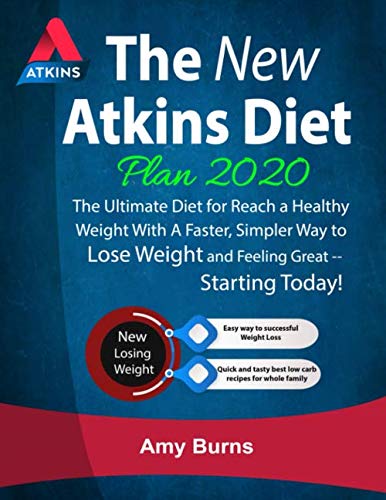
Healthy eating videos are a great way to learn about healthy eating. The video explores several topics, including the role of fruits and vegetables as well as the relationship between healthy eating patterns and cancer risk. Information on myths and facts about cancer and the connection between diet and exercise is also included. This video will give you some ideas and tips on how to eat better and stay fit. It's a valuable tool that can be used by both people who care about their health and those with diabetes.

Using 4654 comments posted on YouTube, we were able to identify 10 clusters of positive associations between healthy eating and cooking. The relationships between these clusters were significant only if they had P values of.001 or lower. Important to remember that not all videos can be considered equal. The content of each video will have a different result. Ultimately, however, the main goal of any healthy eating video is to help people become more informed about healthy eating and how to improve their nutrition.
The video discusses fish, fat, as well as salt. The tips are simple and can be easily implemented in the kitchen. The instructions include a stepby-step guide for how to prepare different dishes such as Asian-Style Steamed Salmon. The recipes can also be displayed on the refrigerator for ease of access. The kitchen should have a healthy eating video to aid people in understanding how to eat well.
FAQ
What does it take to make an antibiotic work?
Antibiotics kill harmful bacteria. Antibiotics can be used to treat bacterial infection. There are many types of antibiotics. Some can be taken orally, others are injected and some are applied topically.
People who have been exposed may be prescribed antibiotics. To prevent shingles, an oral antibiotic may be prescribed to someone who has had chicken pox. Or, if someone has had strep throat, he or she might receive an injection of penicillin to help prevent pneumonia.
If antibiotics are to be administered to children, they must be prescribed by a doctor. Children are at greater risk of developing side effects from antibiotics than adults.
Diarrhea is one of the most common side effects of antibiotics. Other possible side effects include stomach cramps, nausea, vomiting, allergic reactions, headaches, dizziness, and rashes. Most of these symptoms disappear after the treatment is completed.
What is the best diet for me?
Your lifestyle and individual needs will determine the best diet for your body. Also, consider your energy expenditure, whether you prefer low-calorie food, and whether you enjoy eating fruits or vegetables.
Intermittent fasting is a good option if you're trying to lose weight. Intermittent fasting allows you to consume only certain meals per day, instead of eating three large meals. This may be a better option than traditional diets with daily calorie counts.
Studies have shown that intermittent fasting can improve insulin sensitivity and decrease inflammation. This could lead to improved blood sugar levels, and a lower risk of developing diabetes. Some research also suggests that intermittent fasting might promote fat loss, and improve overall body composition.
Why should we have a healthy lifestyle to begin with?
A healthy lifestyle will help us live longer and happier lives. A healthy diet, regular exercise, good sleep habits, and stress management will help prevent diseases like heart disease, diabetes, cancer, and stroke.
A healthy lifestyle will improve our mental well-being and help us deal better with everyday stressors. Healthy living will boost self-confidence and make you look and feel younger.
Is cold a sign of a weak immune response?
Being cold gives you a weaker immune system because when you are cold, your body produces less white blood cells which fight infections. You will feel less pain if you are cold.
What should I eat?
Take in lots of fruits and veggies. These fruits and vegetables are high in vitamins, minerals, which can help you keep your immune systems strong. They are also rich in fiber, which is good for digestion and makes fruits and vegetables filling. Aim to eat five to six servings of fruit each day.
Make sure you drink plenty of water too. Water flushes toxins from the body and gives you a full feeling between meals. Drink about eight glasses each day.
Whole grains are better than refined ones. Whole grains contain all of their nutrients, including B vitamins and iron. Some nutrients have been removed from refined grains.
Avoid sugary drinks. Sugary drinks are full of empty calories and lead to obesity. Instead, you can opt for water or milk, as well as unsweetened herbal teas.
Avoid fast food. Fast food lacks nutritional value. It may taste great but it won't give you the energy you need to function properly. Use healthier options, such as soups, sandwiches, salads, and pasta.
Reduce your alcohol intake. Alcohol contains empty calories and contributes to poor nutrition. Limit yourself to no more than two alcoholic beverages a week.
Red meats should be avoided. Red meats can be high in cholesterol and saturated fat. You should choose lean cuts like beef, pork lamb, chicken and fish instead.
Statistics
- In both adults and children, the intake of free sugars should be reduced to less than 10% of total energy intake. (who.int)
- WHO recommends reducing saturated fats to less than 10% of total energy intake; reducing trans-fats to less than 1% of total energy intake; and replacing both saturated fats and trans-fats to unsaturated fats. (who.int)
- This article received 11 testimonials and 86% of readers who voted found it helpful, earning it our reader-approved status. (wikihow.com)
- According to the Physical Activity Guidelines for Americans, we should strive for at least 150 minutes of moderate intensity activity each week (54Trusted Source Smoking, harmful use of drugs, and alcohol abuse can all seriously negatively affect your health. (healthline.com)
External Links
How To
What does the term "vitamins" mean?
Vitamins are organic substances found naturally in food. Vitamins aid us in absorbing nutrients from the food we eat. The body cannot make vitamins; therefore, they must be obtained from food.
There are two types: water-soluble and fat-soluble vitamins. Water-soluble vitamins dissolve easily when they are dissolved in water. Vitamin C,B1(thiamine), B2 (2riboflavin), and B3 (3niacin), as well as vitamin C,B1, B2 (riboflavin), and B3 (niacin), vitamin B6 (pyridoxine), vitamin folic acid (biotin), pantothenic, and choline are examples. The liver and fat soluble vitamins are stored within the liver and in fatty tissue. Examples include vitamin D, E, K, A, and beta carotene.
Vitamins are classified according to their biological activity. There are eight major vitamin groups:
-
A - vital for healthy growth.
-
C - important for proper nerve function and energy production.
-
D - essential for healthy bones, teeth, and gums.
-
E is required for good vision and reproduction.
-
K – Required for healthy nerves & muscles.
-
P - essential for strong bones, teeth and tendons
-
Q - Aids digestion and iron absorption
-
R - Red blood cells are made from red blood cells.
The recommended daily allowance for vitamins (RDA) varies based on gender, age, and physical conditions. The U.S. Food and Drug Administration (FDA) sets the RDA values.
For adults aged 19 and older, the RDA for vitamin B is 400 micrograms daily. Pregnant mothers need 600 micrograms per days because it is vital for the development and growth of their baby. Children ages 1-8 require 900 micrograms per day. Infants under one year of age require 700 micrograms per day, but this amount decreases to 500 micrograms per day between 9 months and 12 months of age.
Children aged between 1-18 years require 800 micrograms of sugar per day, while overweight children need 1000 micrograms. Children who are underweight receive 1200 micrograms every day to meet their nutritional requirements.
Children between 4 and 8 years old with anemia will need 2200 micrograms daily of vitamin C.
2000 micrograms per person is necessary for general health. Women who are pregnant or breastfeeding need 3000 micrograms per day due to increased nutrient requirements.
1500 micrograms are required daily by adults over 70 because they lose approximately 10% of their muscle each decade.
Women who are pregnant or nursing need more than the RDA. Pregnant and breastfeeding women require 4000 micrograms each day during pregnancy and 2500 Micrograms each day after delivery. Breastfeeding mothers require 5000 micrograms daily when breast milk production is occurring.